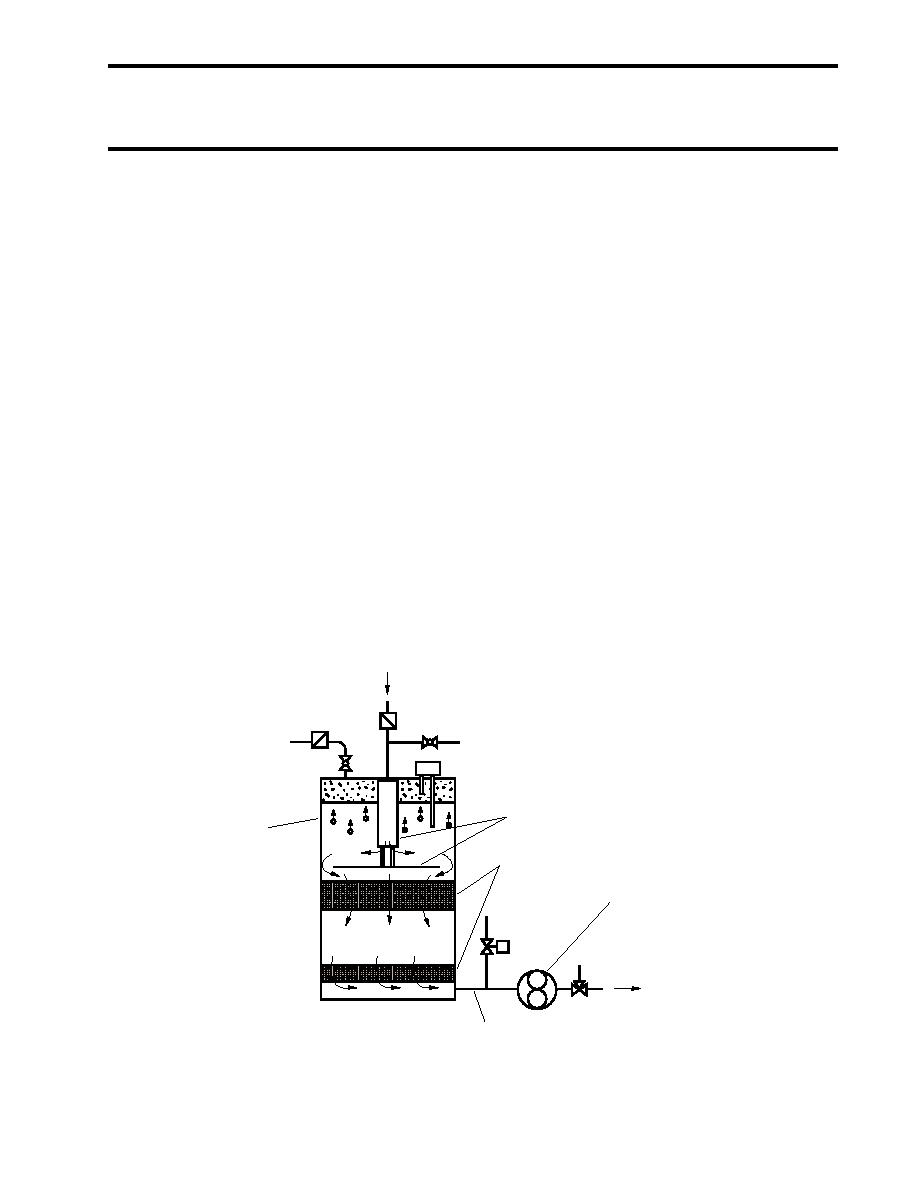
TM 55-1925-285-13&P
OPERATOR, UNIT, AND DIRECT SUPPORT MAINTENANCE
OIL WATER SEPARATOR FOR
INLAND AND COASTAL LARGE TUG (LT)
THEORY OF OPERATION
GENERAL
The Large Tug (LT) utilizes an Oil Water Separator (OWS) to remove oil from bilge water, thus cleansing the bilge
water before it is permitted to be discharged overboard. An Oil Content Monitor (OCM) is used in conjunction with
the OWS to monitor oil levels in the discharge stream from the OWS. The OCM prevents accidental overboard
discharge of oil-contaminated water by sounding an alarm and by redirecting the discharge flow whenever se-
lected discharge oil levels are exceeded. The theory of operation for these two interrelated systems is presented
in the paragraphs below.
OIL WATER SEPARATOR (OWS) THEORY
Operation of this OWS is based on the fact that oil is lighter than water, causing oil droplets to rise through a still
or slowly flowing body of water. This is known as gravity separation. The larger an oil droplet is, the faster it will
rise, and very small droplets may not rise at all. To remove more of the oil as it flows through the OWS, the design
also incorporates coalescing sections, in which small droplets contact each other and form larger ones.
A positive displacement pump (figure 1, item 1), mounted downstream of the OWS tank, draws unprocessed oily
water from the Oily Waste Tank (OWT) into the separator (figure 1, item 2). The separator consists of a single
tank in which several oil-separation zones are created by the inlet weir and baffle arrangement, (figure 1, item 3),
two permanent polypropylene coalescer beds (figure 1, item 4), and the water spaces between them. In this
design, the oil-water separation is accomplished in two stages. The upper zones of the tank promote gravity
separation. The inlet baffle directs the flow of oil droplets away from the upper coalescer bed. This provides an
extended retention time for the oil droplets in the upper portion of the tank, which enables the larger oil particles
to separate and rise to the tank top. The inlet weir separates the oil accumulated in the tank from the inlet flow.
This helps to prevent remixing of the accumulated oil in the tank top during the normal operation and manual
OILY WATER
FROM OWT
OB-13
CLOSED
INTERFACE
OWS-2
SENSOR
OPEN
3
2
4
1
GS-74
CLOSED
CLEAN
WATER
OVERBOARD
OWS-4
OWS
5
PUMP
ON
Figure 1. Normal Processing Mode
0003 00-1

